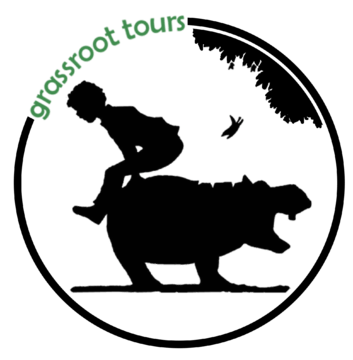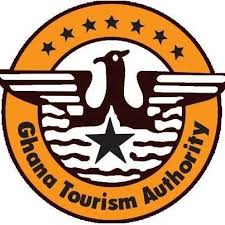GHANA HIGHLANDS
The highlands of the Volta region are remote, lush and cooler because of the altitude. The people see fewer visitors, so the interactions are more authentic.
Mountain Afadjato
At 885m, Mount Afadjato is the highest peak in Ghana. It forms part of the Agumatsa range which runs along the Ghana-Togo border. The difficult hike to the top is rewarded with magnificent panoramic views of surrounding communities, forests, and in the distance, Volta Lake.
Amedzofe, Biakpa, and Logba Tota are three Volta villages that are nestled in the mountains that have a good infrastructure for visitors. A more recently developed village is Likpe Togome, just north of Wli Falls. At this location are ancestral caves, mountain hiking trails, and a soon-to-be-opened paragliding site.
Tongo Hills & Gambaga Escarpment
The Tongo Hills is a rocky granite outcrop rising from the savannas of the Upper East Region. The unique village of Tenzug rests below the cliffs in this land of many sacred shrines. The hills host colorful festivals, while the village is home to the amazing maze-like chief’s home, the largest of its type.
Tenzug can serve as your starting point on a loop to explore the remote and rarely visited Gambaga escarpment. Rising hundreds of meters out of the plains, this is a place that was home to one of Ghana’s oldest ancient kingdoms. Relics of the slave raider days as well as a kukoa, or “witches camp” that is a refuge for outcast women can also be visited here.
Ghana recognizes her responsibility and has ratified international agreements protecting biodiversity, endangered species, tropical forests, wetlands, and the ozone layer.
Kwahu Plateau
The Kwahu Plateau has the highest inhabited place in Ghana, at Abetifi, though this is not the highest mountain in the country. The plateau parallels the Accra-Kumasi road from Bunso to Nkawkaw, where scenic diversions can be taken off the main road at either end of the plateau.
At the south end of the plateau is Adjeikrom, where a cocoa farm can be visited and crafts purchased, and the village of Begoro, higher up the plateau and home to the seasonal Begoro Falls.
At the north end of the plateau is the busy town of Nkawkaw, which is full of old colonial buildings. The plateau road from Nkawkaw is an extraordinarily beautiful drive, passing highland villages with old colonial buildings, the aforementioned Abefiti, and Kwahu Tafo, home of waterfalls and the Buruku Rock Pillar Shrine, which suspiciously looks like the Eye of Sauron from The Lord of the Rings, and has similar mythology.
For a true adventure, you can circle the plateau, moving from Begoro to Kwahu Tafo on the remote backside of the Kwahu Plateau which would follow the western coast of Volta Lake for a short way.
Aburi Botanical Garden
Aburi Botanic Garden was officially opened in March 1890 and is one of the most beautiful, peaceful and fascinating places in Ghana. Covering 64.8 hectares and overlooking the Accra coastal plain from an elevation of 370 to 460 meters, the Aburi Botanic Garden is a must experience for every Ghanaian as well as visitors to Ghana. Butterfly and bird lovers would love Aburi Gardens for the presence of many species. Another delight of Aburi Botanic Garden is the blossoming mixture of indigenous and exotic trees. Various hikes are possible as well as bike rentals.
Bobiri Butterfly Sanctuary
Located 20 km on the Kumasi and Accra highway, it is quiet research showcasing an arboretum, forest hiking trails, and a butterfly sanctuary; lodging, guiding and interpretative materials are available.
The Forest is an undisturbed rainforest. In front of the guesthouse is the butterfly sanctuary where different butterfly species could be observed. The butterflies are at their best during mid-day since they do not like moisture.
The reserve is ideal for rain forest walk through the carefully laid paths. Visitors would also have the opportunity of identifying different tree species. The forest canopy creates a cool and conducive environment which you will love.
Mount Afadjato is the highest peak in Ghana at 885 meters. It is located in the Agumatsa Range near the Ghana-Togo border. The hike to the top is challenging but offers magnificent panoramic views of the surrounding communities, forests, and Lake Volta. The best time to climb is during the dry season for safer trails and clearer views.
The Tongo Hills, located in the Upper East Region, feature rocky granite outcrops and the unique village of Tenzug. Visitors can explore sacred shrines, participate in colorful festivals, and visit the maze-like chief’s home. The area also serves as a starting point for exploring the remote Gambaga Escarpment.
The Kwahu Plateau offers scenic drives through highland villages, visits to cocoa farms in Adjeikrom, and seasonal waterfalls in Begoro. The northern end, near Nkawkaw, is known for its old colonial buildings and the Buruku Rock Pillar Shrine. The area is ideal for adventurous travelers looking to explore remote backroads and the Volta Lake coastline.
Opened in 1890, Aburi Botanical Garden covers 64.8 hectares and offers a serene environment with indigenous and exotic trees, hiking trails, and bike rentals. It is a popular spot for butterfly and bird watching and features unique attractions like the “Tree of Life” by Kofi Sale and an old helicopter.
Aburi Botanical Garden is accessible via public transport from Accra, with regular trotros from Madina Station or ride-hailing services like Uber and Bolt. Private transportation is also an option for a more comfortable journey.Grassroot Car Rental offer good transportation options.
Located near the Kumasi-Accra highway, Bobiri Butterfly Sanctuary offers forest hiking trails, an arboretum, and a butterfly garden. Visitors can enjoy observing various butterfly species, especially at midday, and explore the diverse tree species in the forest.
The Gambaga Escarpment is historically significant as the home of one of Ghana’s oldest ancient kingdoms. Visitors can explore relics from the slave raider days and visit a “witches camp,” which serves as a refuge for outcast women. The area is remote and rarely visited, offering a unique cultural and historical experience.
The entrance fee for Aburi Botanical Garden is GH¢5 for Ghanaian adults and GH¢10 for non-Ghanaian adults. The garden offers various attractions and activities, including guided tours, picnicking, and exploring the orchid house and rock garden.
The Kwahu Plateau is known for its high-altitude villages, colonial architecture, and natural attractions like waterfalls and the Buruku Rock Pillar Shrine. The plateau offers both cultural and natural experiences, with opportunities for cocoa farm visits and exploring scenic drives along the Volta Lake coast.
The best time to visit the Ghana Highlands is during the dry season, from November to March, when the weather is more favorable for hiking and outdoor activities. This period also provides clearer views and safer trails for climbing mountains like Mount Afadjato.




